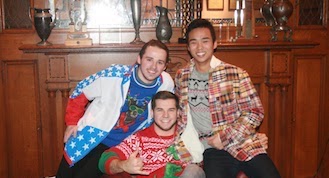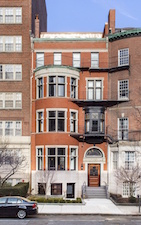Alpha Theta Sigma Chi's Rich History
THE OLDEST CONTINUOUS FRATERNITY AT MIT
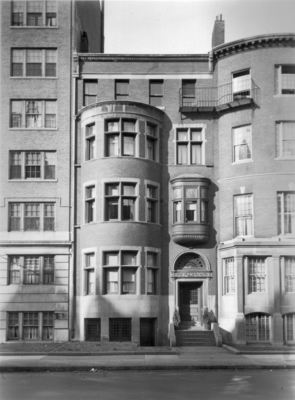
Sigma Chi has had a long history of excellence at MIT that began in 1882. The Alpha Theta Chapter is the oldest continuously operating fraternity at MIT with one of the oldest houses as well. With nearly 130 pledge classes that have gone through Alpha Theta, our alumni are found in all parts of the world, in a myriad variety of career pursuits.
The Massachusetts Institute of Technology was originally conceived to fill the need for a technical school with status equal to a liberal arts college. However, like all technical institutions of the day, MIT drew almost all of its students from local communities, rather than from a regional or national area. As a result, no effort was made to house the students.
Times were changing, however, and soon Boston Tech -- then located at Boylston and Berkeley Streets -- became nationally known. Students came from all sections of the country, but MIT still did not consider student welfare its responsibility.
Such a situation led to the development of fraternities. After an unsuccessful attempt to establish a local fraternity at MIT in the fall of 1881, two of the originators met some members of the Omega Chapter of Sigma Chi at a football game over Thanksgiving, and discussed fraternities with them. The result was that on March 21, 1882, Orlo D. Skinner and William B. Meyers, of Phi Chapter, Lafayette, installed the first permanent fraternity on the MIT campus. It was the first Sigma Chi chapter in New England, and the 44th of the present international fraternity. The first meetings were held in the rooms of the members, but in November of 1882, they changed to Berkeley Hall. In 1886, they leased a suite of apartments near the institute. 1887 saw a move to Oxford Terrace; 1888, the Hotel Clifton. In 1890, Sigma Chi moved to an apartment on Huntington Avenue. In 1902, the brotherhood moved to 1067 Beacon Street, Brookline.
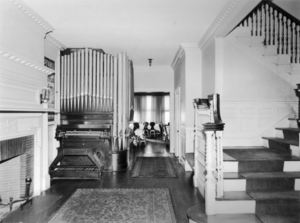
When the United States entered World War I, the fraternity house closed down, all students having been drafted and then sent back to school in uniform. A few weeks after the armistice, the brothers reassembled and rented rooms in the old Fritz Carlton Hotel on Boylston Street. This location was unsatisfactory, but soon a house was found that had been unoccupied for years. It was located at 532 Beacon Street.
On January 1, 1919, Sigma Chi leased 532 Beacon Street from the heirs of Francis W. Kittredge, a Yale Law School graduate, for whom the house was originally built. On May 1, 1924, the chapter purchased the house for $40,000 (more than $500,000 in 2011 dollars) -- they had raised $28,000 from alumni over the previous 15 years, and took out a loan to pay the rest.
532 Beacon Street has remained the home of generations of Alpha Thetas. Since then, house managers have been working alongside the trustees -- and later the house corporation -- to maintain the chapter house.
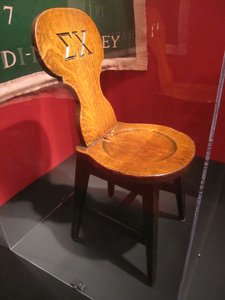 Things have come a long way since the chapter relied on hot water being piped in through the party wall from the hotel next door.
The last significant renovation took
place in 1977, when the current heating plant, plumbing, kitchen, bathrooms, and rear windows were installed. For 35 years, those systems have served admirably, but the time has come to prepare the chapter house for many decades to come.
Things have come a long way since the chapter relied on hot water being piped in through the party wall from the hotel next door.
The last significant renovation took
place in 1977, when the current heating plant, plumbing, kitchen, bathrooms, and rear windows were installed. For 35 years, those systems have served admirably, but the time has come to prepare the chapter house for many decades to come.
As part of MIT's 150th anniversary celebration, a Sigma Chi dining room chair was chosen to be one of the 150 MIT-related artifacts featured in the "MIT 150" exhibition, which was run by the MIT Museum throughout 2011. The chair symbolized the central role that fraternities and other independent living groups have played at MIT over its history.
| <- previous page | renovation home | next page -> |
